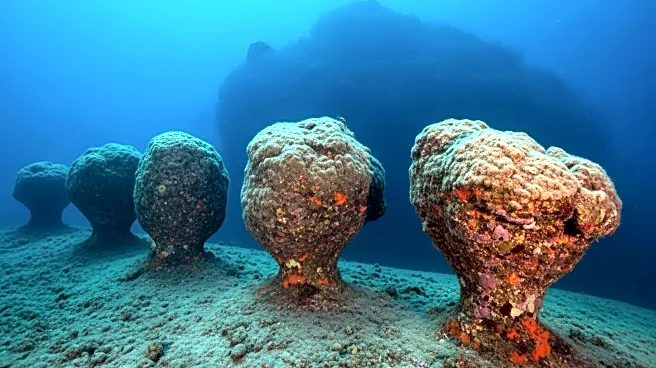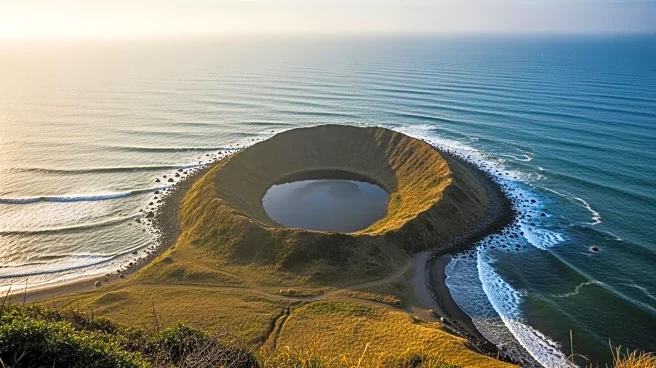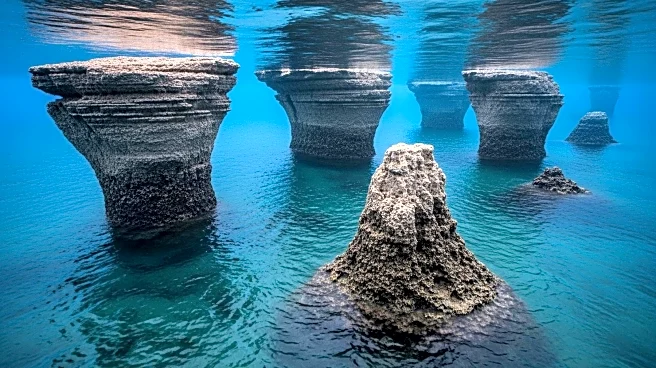What is the story about?
What's Happening?
Recent research conducted by geologists from Heriot-Watt University and other institutions has uncovered colossal structures buried deep beneath the Atlantic Ocean. These findings offer new insights into the formation of the Atlantic Ocean and the separation of South America and Africa. The structures, identified as mud waves, were formed due to the mixing of highly saline water from the South Atlantic with less salty water from the North Atlantic. This mixing created powerful currents that led to the formation of these gigantic mud waves, which are now buried beneath the ocean floor. The discovery challenges previous assumptions about the timeline of the Atlantic Ocean's formation, suggesting it may have begun earlier than previously thought.
Why It's Important?
The discovery of these ancient mud waves is significant as it provides a clearer understanding of the geological processes that shaped the Atlantic Ocean. The findings suggest that the opening of the Atlantic was not a sudden event but a prolonged process marked by tectonic rifting. This geological event may have had global climate implications, as the formation of the Atlantic disrupted carbon sinks, leading to a period of global warming between 117 and 110 million years ago. Understanding these processes is crucial for geologists and climate scientists as they study Earth's historical climate changes and their impact on current global conditions.
What's Next?
Further research is likely to focus on analyzing sediment cores from the region to gain more insights into the geological history of the Atlantic Ocean. Scientists may also explore the implications of these findings on current climate models, considering the historical carbon emissions and their role in past climate shifts. The study could prompt additional investigations into other oceanic formations and their impact on global climate patterns.
Beyond the Headlines
The discovery of these mud waves highlights the complex interplay between geological events and climate change. It underscores the importance of understanding Earth's geological history to predict future climate scenarios. The findings may also influence discussions on carbon sequestration and its role in mitigating climate change, as historical disruptions in carbon sinks have shown significant climate impacts.
AI Generated Content
Do you find this article useful?














